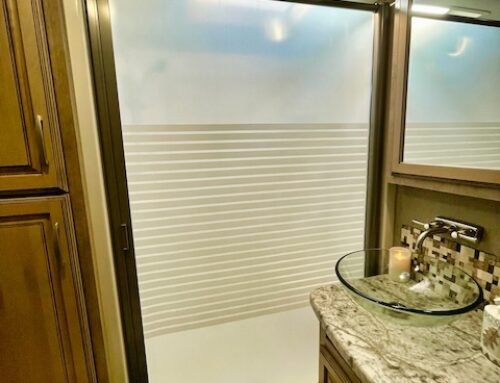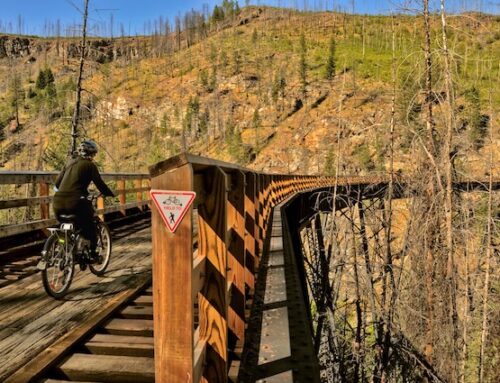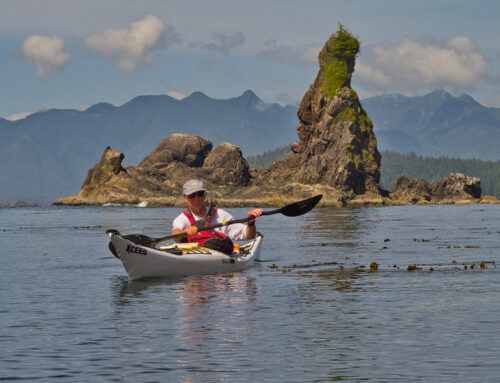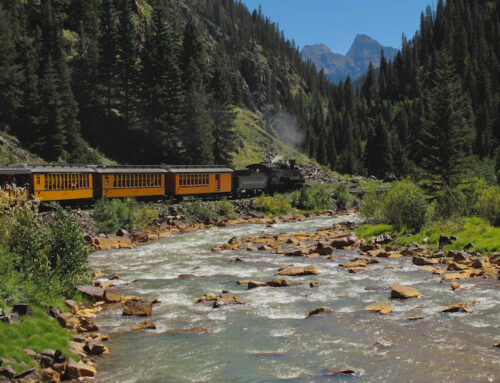A Kayaking Trip from Bella Bella to Port Hardy
It was the summer of 2009 when my good friend Dugald approached me about joining him on a kayaking trip that would begin in Bella Bella, on British Columbia’s central coast. From there we would paddle south, ending the trip in Port Hardy, a small town near the north end of Vancouver Island, approximately 108 nautical miles (200 km) away. My business kept me very busy during the summer months and getting away was always a problem for me, but somehow I found a way to make the trip work. It had been a long long time since I had taken the time to get away on a paddling trip and this one really intrigued me so I didn’t want to miss the opportunity.
Getting to Bella Bella
The trip would begin with a 6 1/2 hour drive north to Port Hardy. From there we would board the BC Ferries, Queen of Chilliwack, for an overnight ride north to the First Nations Community of Bella Bella where we would begin our paddle the next morning.
The BC Ferry system is really very good and they are well prepared to deal with kayakers heading to various points on the Central and North Coast. Most kayakers, like us, will walk on the ferry leaving their vehicles in the parking lot at the Bear Cove Terminal in Port Hardy. They will either paddle back here or get picked up at another ferry terminal on the coast. Check out our post on our kayaking trip from Klemtu to Bella Bella
On our arrival at the Bear Cove Ferry Terminal we loaded our kayaks onto the BC Ferries’ kayak trailer and strapped them down. The rest of our gear, except for what we needed for the overnight crossing, was loaded into baggage carts. No need to worry about your gear, these carts are locked up once they are full. At the time of our trip, the Queen of Chilliwack left at 8 pm and once on board, we found some seats and got ourselves comfortable, eventually rolling out our sleeping bags onto the floor to try and get some sleep for the overnight crossing to Bella Bella.
In the morning we had time to grab some breakfast at the onboard cafe before docking in McLoughlin Bay, which is located a couple of kilometres south of Bella Bella. There are no facilities at McLoughlin Bay except the ferry terminal and a First Nations fish processing plant. Once docked, the kayak trailer and baggage carts were rolled off the ferry and we carried our gear down to the beach located beside the ferry dock.
Day 1 – McLoughlin Bay to the Southern Tip of Campbell Island
It’s always a little stressful getting the boats loaded on the first day, hoping that the huge mound of gear stacked on the beach was actually going to fit in the kayaks. It did, and we set off under cloudy skies, turning south down Lama Passage where we would follow the shoreline of Campbell Island to Hunter Passage.
Our first day’s destination was an unnamed islet at the tail end of Campbell island, just east of Dodwell Island, with a gorgeous shell beach and turquoise waters. By the time we arrived, the sun was breaking out of the clouds setting things up for a beautiful afternoon and evening. Once camp was set up, Dugald hopped back in his boat and within about 15 minutes caught a nice sized rock fish for dinner.
Day 2 – Campbell Island to Cultus Sound
We woke to sunny skies and continued our journey southwest down Hunter Channel eventually turning south into Sans Peur Passage. It is around here that we entered the Hakai Lúxvbálís Conservancy which encompasses more than 120,000 acres.
The Hakai Lúxvbálís Conservancy is managed under an agreement between the Heiltsuk First Nation and the Province of British Columbia to manage the land for recreation and conservation as well as allow the Heiltsuk Nation to access land and resources for their use in accordance with their aboriginal rights. It is the largest provincial marine protected area on the British Columbia coast and has no developed facilities. The Hakai Conservancy can only be accessed by sea or air and includes the southern 3/4 of Hunter Island, Stirling Island, Palau Island, Hecate Island, Hurricane Island, Spider Island, Goose Island, the McNaughton Group, and the northern portion of Calvert Island.
Sans Peur Passage separates the McNaughton Group Islands from Hunter Island and gets quite narrow and shallow in spots making for some interesting exploring. We poked into one small inlet running of Sans Peur to have a look at a campsite just for interest’s sake.
Just before entering Cultus Sound we noticed, or rather smelled something quite foul. It turned out to be a well decayed whale carcass washed up on the beach. We stopped to have a quick look but couldn’t really identify anything about the whale. Perhaps a grey or humpback calf as it was quite small?
Paddling into Cultus Sound, our camp for the night was a north facing sandy cove on Hunter Island near the entrance to the sound. Once camp was established, we headed off for an afternoon’s exploratory paddle, ultimately paddling into a large bay east of our campsite. There were salmon jumping all around us as we came into the bay and although a hand line is not the ideal way to catch a salmon, it never hurts to try! As it turns out, luck was with us that afternoon and Dugald managed to land a good sized salmon! Needless to say, dinner was delightful with leftovers for the next day!!
Day 3 – Cultus Sound to the Serpent Group
In the morning, I am embarrassed to admit, I would lose my sunglasses. Foolishly, I had them up on my hat without a strap. At some point they fell off while we were loading the kayaks without me noticing. After about 15 minutes of fruitless searching we had to give up. I figured I would just have to do without for the rest of the trip.
Dugald, however, with his years of guiding experience, recognized that not having sunglasses for the rest of the trip could be a bad decision and decided to remedy the problem by asking a couple on a yacht anchored in the bay if they could help us out. As it turns out they had a pair that someone had left on their boat and happily offered them to us. They were a pair of very large, gold framed women’s sunglasses. They certainly weren’t cool and I looked a bit like Elton John, but they were large enough to fit over my prescription glasses and were functional. As they say, “beggars can’t be choosers”.
Fashionably equipped with my ‘new’ sunglasses, we headed west out of Cultus Sound and turned south along Hunter Island heading for Spider Passage, which runs between Spider and Spitfire Islands. Just south of the passage we stopped for a lunch break on Edna Island before carrying on to have a look at a potential campsite on Triquet Island. Deciding not to camp there, we continued east to the Serpent Group Islands, located in Kildidt Sound.
It was in Kildidt sound that we spotted our first sea otter of the trip.
Sea otters unlike river otters are true marine mammals. They spend very little time out of the water and are quite awkward on land. Unlike other marine mammals, they stay warm with their luxuriant thick coat of fur rather than blubber. Sea otters were reintroduced to the west coast of Vancouver Island in the 1980’s and have made a remarkable comeback.
The Serpent Group is a small, rocky group of islands and they are quite spectacular. The access to the campsite is located at the end of a narrow, steep sided, rocky passage and is only accessible by kayak at higher tide levels. Unless you knew there is a campsite hidden in there, it would be very easy to miss. The beaches are white sand the and the waters are spectacular turquoise and green…a real paradise!
Day 4 – Serpent Group to North Bay, Calvert Island
The weather continued to be spectacular, waking in the morning to clear skies and calm winds. We had a bit of a hike down the channel from our campsite to the beach because of the tide was low, but getting an early start meant we had a gorgeous and calm crossing of Kildidt Sound to Sterling Island. From here we would turn south and work our way towards the edge of Hakai Passage.
Hakai Passage means ‘wide passage’ in Heiltsuk and it is well known for the large swell that can roll in from Queen Charlotte Sound. Add some wind and this 3 nautical mile crossing can be intimidating to say the least. Fortunately for us, conditions for our passage were beyond ideal. The water was like glass and the skies sunny and warm!
We made the crossing without a hitch, reaching Odlum Point on the north end of Odlum Island right off the northwest tip of Calvert Island. From there we worked out way down Choked Passage to our campsite on a large north facing bay near the start of Choked Passage, appropriately named, North Bay.
Our campsite at North Bay on Calvert Island was a delight!. There was a large sandy beach to explore and a trail that lead over the peninsula, crossing a small lake on a makeshift bridge, to West Beach, also appropriately named. Later in the evening, we would practice our rock climbing skills as we made our way around a rocky point near where we were camped and checked out some interesting intertidal life.
Day 5 – North Bay to Bay the Inside of Blackney Island, Calvert Island
In the morning we would continue down the west coast of Calvert Island. Our good luck with the weather continued to hold and once again we were faced with the ordeal of sunny skies and calm winds. This was ideal for transiting this potentially hazardous section of the coast.
The trip from our campsite on North Beach in Choked Passage to the southern tip of Calvert Island would cross approximately 23 nm (42 km) of very exposed open water. The reason for choosing this exposed side of Calvert rather than running down the more protected inside were, for us, the miles of sandy beaches and untouched coastline and the absolute seclusion this stunningly beautiful coastline offeres. You don’t see many other people out here and on this trip, we saw none.
Our next destination was a campsite just inside of Blackney Island just north of Herbert Point, about three quarters of the way down the island. On our approach to the beach I had my very first sighting of a west coast sea wolf. It is rare to spot these spectacular animals and this one stopped for just a brief moment to have a look at us before disappearing into the forest. Sadly there was no time to get the camera out however, we saw his/her tracks on the beach a little later…a very big critter!
The campsite was on a beautiful sandy beach, but there were a couple of hazards. First, it was sunny and hot, we had no choice but to put up our tarp for some shade! Secondly, the sand had drifted up over the driftwood stacked on the beach, hiding some serious sand pits. You had to be really careful where you walked as Dugald would find out a little later!
All good things eventually must come to an end, and later in the afternoon we watched as fog began to form off shore and started rolling towards us. The fog cooled things off dramatically, nature’s air conditioner at work!
Day 6 – Bay Inside Blackney Island to Grief Bay, Calvert Island
The fog persisted through the night and in the morning we set off in low visibility for Grief Bay located near the southern tip of Calvert Island. Along the way we spotted a couple of Orcas heading straight towards us, regularly porpoising in and out of the water as they swam along. They were on a direct collision course with us, but a couple of hundred meters away, one of them started jumping up out of the water, probably trying to have a look at us. Shortly after they both dove out of sight and we saw nothing of them again until we heard their blows some distance behind us. It is remarkable how aware they are of what’s around them!
As I’ve mentioned already, the waters off Cape Calvert can be very challenging, and this day was no exception. The conditions were very rough as we worked our way along the final portion of the coast before turning in behind Sorrow Island towards Grief Bay. Even our lunch stop was sub-optimal on this day, finally having to choose a boulder strewn bay as the only place we could find to get out.
Grief Bay is appropriately named. Landing on this beautiful sandy beach would be the nemesis for my camera. I had my Nikon D70 out taking some pictures on our approach to the beach. There was some small surf dumping on the beach, so before landing I put my camera back in its dry box. However, since the waves were small, I got lazy and didn’t bother with my spray skirt…big mistake!
Unfortunately, on landing, even though the waves were small, I still managed to take a wave into the cockpit. That in itself that wasn’t a big deal, but on getting out of my boat I discovered that a piece of my camera strap was sticking out of the closed dry box. That tightened my sphincter a bit and for good reason. The worst had happened and on further inspection, the box was full of water…salt water and a disaster for my camera!
This was hugely disappointing as we were only on day 6 of our 2 week trip. However, there was not a thing that could be done about it and fortunately Dugald still had his camera.

Landing at Grief Bay, Calvert Island and the small wave that swamped my cockpit – Dugald Nasmith Photo
Dugald later confessed that he was a little concerned about how I was going to be for the rest of the trip being without my camera. Fortunately, after a couple of hours berating myself, I managed to shake the episode off and just planned to enjoy the rest of the trip.
This tragic episode, on my first return to expedition paddling in many years, was to be a major learning experience for future trips. It got me to thinking about what type of equipment was really needed on trips like this. This led to good discussions with Dugald on exactly what that equipment might look like. First, it was fairly obvious that pulling an expensive camera out while on the water is risky business, as this recent experience exemplified. Second, just pulling a camera out of a dry box every time you want to take a picture on the water is a pain in the ass and many photographic opportunities are lost by the time you get the camera out. Third, if conditions on the water are bad, pictures are not even an option. This lead us to thinking we needed a versatile camera with good controls, a decent zoom lens and most of all, fully waterproof. On future trips this is exactly what we would both carry, and our SLR’s would remain safely stowed in their waterproof boxes until we were on dry land, at least for the most part.
Day 7 – Grief Bay to Dsulish Bay
The crossing from Cape Calvert to Kelp Head on the mainland, across the entrance to Fitzhugh Sound, is the largest of the trip at around 7 nm (13 km), and it is very exposed to the open swell rolling in from Queen Charlotte Sound. It would take us roughly 2 1/2 hours to make the crossing and to make it even more challenging, we had to do it in heavy fog with visibility near zero. To add to the risk, Fitzhugh Sound is the beginning of British Columbia’s Inside Passage, the route many large vessels take when working their way up the coast including cruise ships and BC Ferries.
We checked the charts and set our compass heading to 106° and began to paddle, listening the whole time for the sounds of large ships approaching. We also had a GPS, which was handy for confirming our heading and monitoring our progress across the sound. In the end, the crossing was uneventful and we made landfall right where we wanted at Kelp Head, on the mainland shore. We carried on south rounding Extended Point and entered Smith Sound. Our destination for our seventh camp was Dsulish Bay on the north side of the sound.
Day 8 – Dsulish Bay to Indian Cove
Camping at Dsulish Bay set us up to paddle across Smith Sound by paddling through the Barrier Group of islands. This broke up the big open water crossing we would have had at the head of the sound. Once across the sound we rounded MacNicol Point and continued south down the coast. We landed in Indian Cove, just south of Neck Ness, to make camp for the night. In the morning we would have to paddle around Cape Caution, which can be one of the toughest sections of water to navigate on the BC Coast.
Indian Cove is a horseshoe shaped cove with a large sandy beach with high rocky outcroppings at it’s outer edges. It was still foggy, but the fog was thinning and the sun was breaking out becoming quite beautiful. It looked like an opportunity for some good photos, so I climbed back in my unloaded boat to paddle around while Dugald took some shots.
Day 9 – Indian Cove to Burnett Bay
At Cape Caution, there is a convergence of waters from Queen Charlotte Sound, Queen Charlotte Straight and Smith Sound. The shallow water around the cape increase the swell height and the steep rocky shoreline can create significant rebound waves. All of this can create some incredibly challenging paddling conditions. Crossing this section of the coast is treated as quite an accomplishment even by mariners on larger boats. We definitely wanted to take this one on early in the morning when the winds were most likely to be light. Our camp at Indian Cove put us in good position to achieve this.
Other than the few periods of fog, it seems we could do no wrong with regards to the weather on this trip. Once again we set off in sunshine and calm winds with just the occasional fog bank drifting in and out to add some ethereal beauty to the day. Our destination was the southern end of Burnett Bay, with a spectacular 2 km long sandy beach which runs most of the length of the bay. Since the surf was low, not always the case at Burnett Bay which is very exposed, we landed near the top end of the bay to take a break and check out a campsite located there.
While we were there another group of paddlers showed up. They were a group of guys from Washington who come up this way every year, taking a water taxi from Port Hardy and getting dropped off south of here where they then paddled up to Burnett Bay. Later that day we would meet a couple of them golfing their way down the beach! We eventually headed off for the campsite at the lower end of the bay where there is nice hook formed by Bremner Point. The inside corner of this hook provides some protection from the surf making for an easy landing.
Burnett Bay was a highlight of the trip. A gorgeous orangy sand beach, fabulous weather, a great spot for tents, an established kitchen area and there is a river flowing into the corner of the bay. It was great place to hang out, get cleaned up, hike the beach, borrow Dugald’s camera for a photography fix and just enjoy!!
Day 10- Burnett Bay to Seymour Inlet
From Burnett Bay, we decided to diverge from the coast and paddle up Slingsby Channel towards Seymour Inlet. We wanted to check out Nakwakto Rapids and Turret Rock. Slingsby Channel runs along the north end of Bramham Island connecting with Seymour Inlet at its eastern end. It is important to choose the correct time to pass through this channel, as currents can run as high as 9 knots (16 km/hr).
Also of concern is the west entrance where the out flowing currents can meet wind and swell from Queen Charlotte Sound. Our passage through the entrance was a bit rough, but manageable. Since we had to wait for the opposing current to ease off, we stopped on the Fox Islands which sit at the entrance of Slingby Channel, to wait and to prepare some lunch. On the way in Dugald hooked a Kelp Greenling, which he turned into some delightful fish tacos for lunch!
The current was flowing lightly against us on departure from Fox Island, so we hugged the shoreline and eddy hopped our way up the channel. On reaching Nakwakto Rapids, we found a spot to land and wait around for the current to turn as it was still running fairly strongly against us.
Nakwakto is considered the fastest tidal rapids in the world reaching speeds of 16 knots (30 km/hr). Right in the middle of the narrows is Turret Rock, which is covered in wooden signs installed there by visitors to the island. They get themselves dropped off at slack water to experience the rock actually trembling from the force of the water flowing by as the current gets up to speed. For this reason the island is locally known as, ‘Tremble Island’. With the current flowing full force, the island looks like a ship plowing through the water with a huge bow wake.
Once slack water came we were back in our boats and heading through the narrow passage with a fairly quick moving current. In very fast rapids like these the time of slack water is minimal. It is generally less than 5 minutes at Nakwakto. The water will swirl around a bit and start moving the other way picking up speed quickly. Once through the rapids, we headed across Seymour Inlet to a campsite directly across from the rapids. We had a pleasant evening at the campsite, but being in calm conditions on inlet waters, the bugs were a little thick.
Day 11 – Seymour Inlet to Shelter Bay
Come morning, we crossed Seymour Channel riding through Nakwatko Rapids on the turn to ebb. This time, instead of heading down Slingsby Channel, we turned left down Schooner Channel on the east side of Bramham Island for the 3 nm run back to the coast.
Day 12 – Shelter Bay to God’s Pocket Marine Park
Our destination for the day was a campsite in a bay just around Westcott Point in Shelter Bay, almost directly across Queen Charlotte Strait from Port Hardy. In the morning we would get up early to begin the crossing of Queen Charlotte Strait. This 17 nm (32 km) crossing can be a bit daunting, but fortunately, it is broken up by groups of islands so it can be done in stages.
The weather continued to be calm and sunny as we headed out of our campsite and crossed Shelter Bay. We working our way through the narrow channel between the Wallace Islands and the mainland where we would be set up to cross Richards Channel. Our first stop was McLeod Island in the Deserter’s Group. From there we would work our way through Shelter Passage, then across Gordon Channel to God’s Pocket Marine Park, just northeast of Hardy Bay. We would camp for the night, our twelfth night, on a small island just southwest of Bell Island.
Day 13 – God’s Pocket Marine Park to Bear Cove
In the morning we would cross Goletas Channel to Vancouver Island, tucking up into the passage behind Duval Island and out to Duval Point at the edge of Hardy Bay. From there it was a short 3 nm crossing of Hardy Bay to Bear Cove and the end of our trip. The take out in Bear Cove is actually at a public boat ramp just west of the ferry terminal, so it was an easy take out and just a short walk up the road to pick up the truck at the ferry terminal.
13 days and 12 nights without a layover day! Normally we would have a least a day here and there, usually forced on us by the weather, and sometimes just to enjoy and explore a location. In this case, we were feeling great, the weather was unusually good and we wanted to take advantage of that. We were passing through long distances of some particularly exposed and gnarly coastline and there weren’t really a lot of spots to stop and take side trips or hike anyway. All in all, short of the loss of a camera, the trip was a great reintroduction to kayak touring!!
Trip Map
Many thanks to our support crew at home for keeping track of our SPOT GPS locations, recording the weather forecasts for those days and plotting them and our route on this great map!
Check Some More Great Kayaking Adventures
Click Here: Kayaking Adventures
More Photos
For more images of this trip or to purchase images for articles, websites, display etc, please check out our “Klemtu to Bella Bella” gallery at our sister website: Brakelightfoto
































































Stunning; Fun to see. What beauty!!
Thanks Margy! It was a lot of fun revisiting this trip!
What a great account of a classic Central Coast trip. Great writing and the photos are off the chart. Sorry about you camera.
Thanks so much Jon! So glad you enjoyed the post!